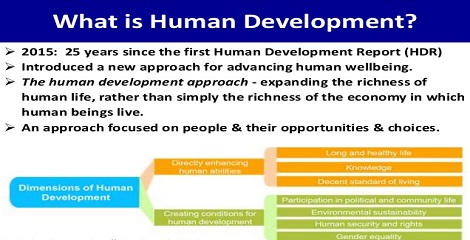As per United Nations Development Programme (UNDP) report on account of rise in life expectancy and per capita income, India has been ranked among 130 among 188 countries in 2014 in Human Development Report 2015 comparing to 135 in 2014 report.
- The 2015 Human Development Report (2015 HDR) was on “Rethinking Work for Human Development”.
- Between 1980 and 2014, India’s HDI value increased from 326 to 0.609 showing an increase of 68.1% or an average annual increase of about 1.54%.
Toppers – Norway topped followed by Australia and Switzerland.
 What is Human Development Index (HDI)?
What is Human Development Index (HDI)?
The HDI is an average measure of basic human development achievements in a country. It is a summary measure for assessing long-term progress in three basic dimensions of human development:
- Long and healthy life
- Access to knowledge
- Decent standard of living
Report Highlights with reference to India
Gender Development Index (GDI) – 2014 female HDI value for India is 0.525 in contrast with 0.660 for males, resulting in a GDI value of 0.795.
Gender Inequality Index (GII) – India has a GII value of 0.563, ranking it 130 out of 155 countries in the 2014 index.
Life expectancy – Data show that life expectancy at birth in India has over the past decade risen from 64.5 years (in 2005) to 68 years in 2014
- For every 1, 00,000 live births, 190 women die from pregnancy related causes; and the adolescent birth rate is 32.8 births per 1,000 women of ages 15-19.
Female participation – 12.2% of Parliamentary seats are held by women and 27% of adult women have reached at least a secondary level of education compared to 56.6% of their male counterparts.
- Female participation in the labour market is 27% compared to 79.9% for men.
The 2015 Human Development Report (HDR) Work for Human Development examines the intrinsic relationship between work and human development. Work, which is a broader concept than jobs or employment, can be a means of contributing to the public good, reducing inequality, livelihoods and empowering individuals.



